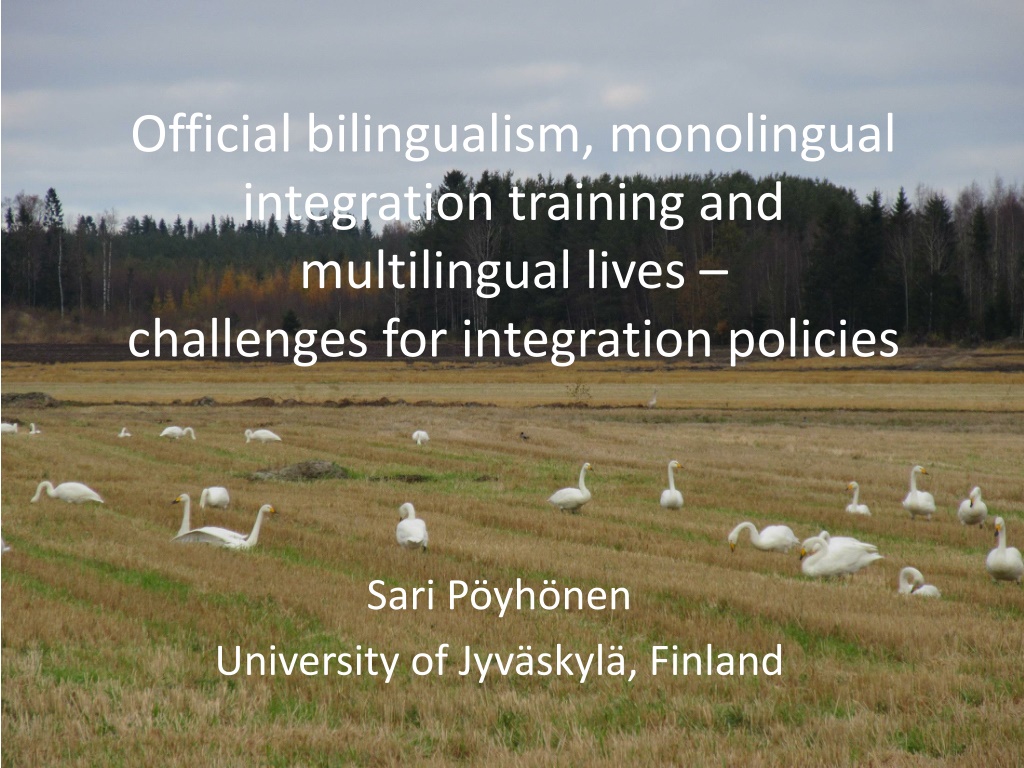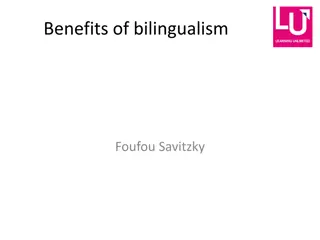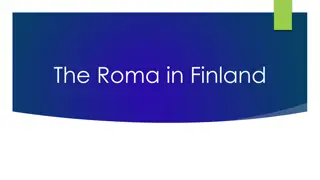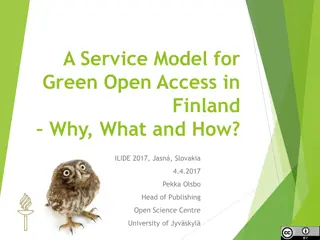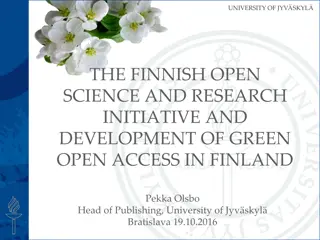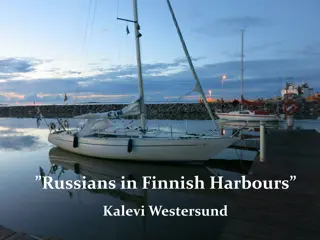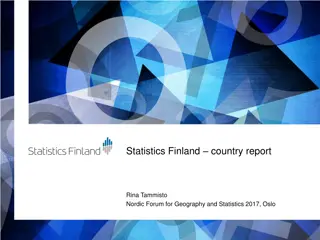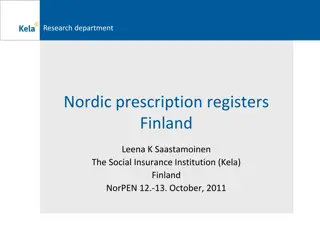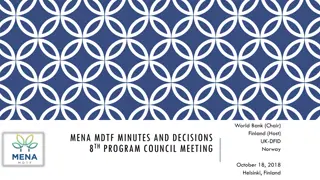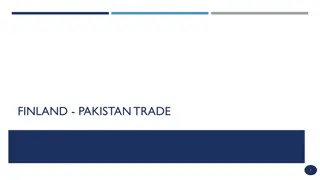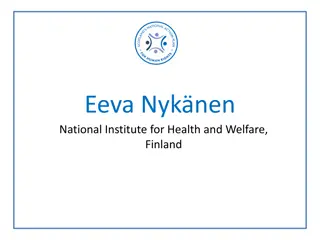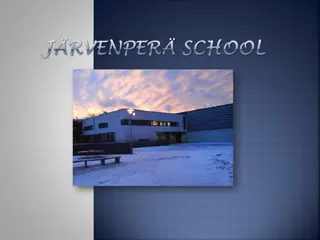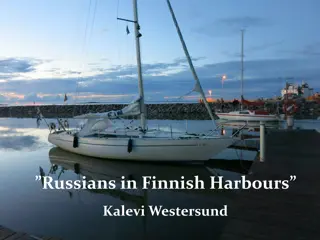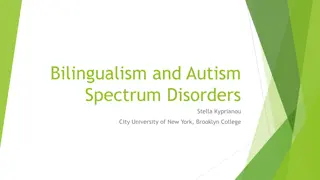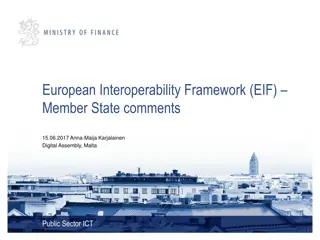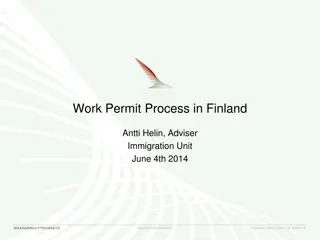Official Bilingualism and Monolingual Integration Policies in Finland
Official bilingualism in Finland between Finnish and Swedish is a crucial aspect of the country's integration policies. The challenges faced by monolingual integration and the importance of proficiency in the national languages for asylum seekers are highlighted. The role of language in integration, particularly the significance of Finnish and Swedish, is explored through ongoing ethnographic research. Integration in Finland is emphasized through language acquisition, with options for learning both Finnish and Swedish based on individual preference and regional factors.
Download Presentation

Please find below an Image/Link to download the presentation.
The content on the website is provided AS IS for your information and personal use only. It may not be sold, licensed, or shared on other websites without obtaining consent from the author. Download presentation by click this link. If you encounter any issues during the download, it is possible that the publisher has removed the file from their server.
E N D
Presentation Transcript
Official bilingualism, monolingual integration training and multilingual lives challenges for integration policies Sari P yh nen University of Jyv skyl , Finland
Official bilingualism in Finland The national languages of Finland are Finnish and Swedish. Constitution of Finland. Section 17 - Right to one's language and culture Population of Finland (5,5 million) 87.6% Finnish-speakers 5.2% Swedish-speakers 0.1% Sami-speakers 7.1% Speakers of foreign languages No official statistics on bilingualism or multilingualism
Jag bor i Oravais (2015-2018), ongoing Multi-sited team ethnography in Swedish Ostrobothnia, Finland Explores persons seeking asylum and the ways in which they tell about their everyday life at the reception centre and other local venues. Analyses the significance of Swedish and Finnish in research participants lives and discusses their lived experiences within wider political contexts and social structures. Produces research findings to prevent ad hoc decisions and structural seggregation
Monolingual integration in Finland Requirement for proficiency in one of the national languages Finnish as the predominant language of integration even in Swedish-dominant areas Asylum seekers as outsiders: not entitled to integration services, but required to engage in education or to work Finnish lessons
Finland is a bilingual country. Its official languages are Finnish and Swedish. Integrating in Finland will be easier, if you can speak the language of the municipality of residence. Learning the language of your new home country is vital. It will be easier for you to find a job if you know Finnish. Some five percent of Finnish people speak Swedish as their native language. Ministry of Employment and the Economy 2012: 12.
Swedish-language integration may be a good choice for you, if: You live in an area with many Swedish speakers. You have family members or relatives who speak Swedish. You already speak some Swedish. Swedish language skills could be useful when you look for work. However, please note that most jobs require proficiency in Finnish. Even if you choose Swedish-language integration training, you should also study Finnish at some point. [ ] According to law, you have the right to choose Finnish or Swedish as your integration language. Ministry of Economic Affairs and Employment 2018: 29.
Forced migration & belonging Perceptions and constructions of belonging and integration (Urry 2000; Giddens 2006; Phipps 2016; also Grzymala-Kazlowska & Phillimore 2017) Class and other identity inscriptions (Anthias 2012; Block 2014)
4 lessons a week Obligatory teaching of Finnish at the reception centre Feeling of being isolated Old time school Similar teaching methods for different needs; shortage of resources and pedagogical expertise Language ideologies; normative understanding of proper Finnish
20 lessons a week Folk high school Norrvalla in V r , project funding Possibilities to meet local people New meaning in life, daily routines Free lunch Swedish felt easier than Finnish Course was intensive but far too short (8 weeks) Motivation to go back to the school was very low
Implicit language policy decisions MIGRIs implicit and explicit roles in the language (education) policy Integration is not the goal of reception centres Language education for internal security Swedish as shared language between co- workers and volunteers Swedish courses provided by other, non- governmental stakeholders
Home language The trouble with variables such as home language [in policy research on language in education] is that they are established as unchecked assumptions and turned into powerful explanatory factors, while, in actual fact, they remain poorly argued and fragile assumptions. (Blommaert 2017: 2)
